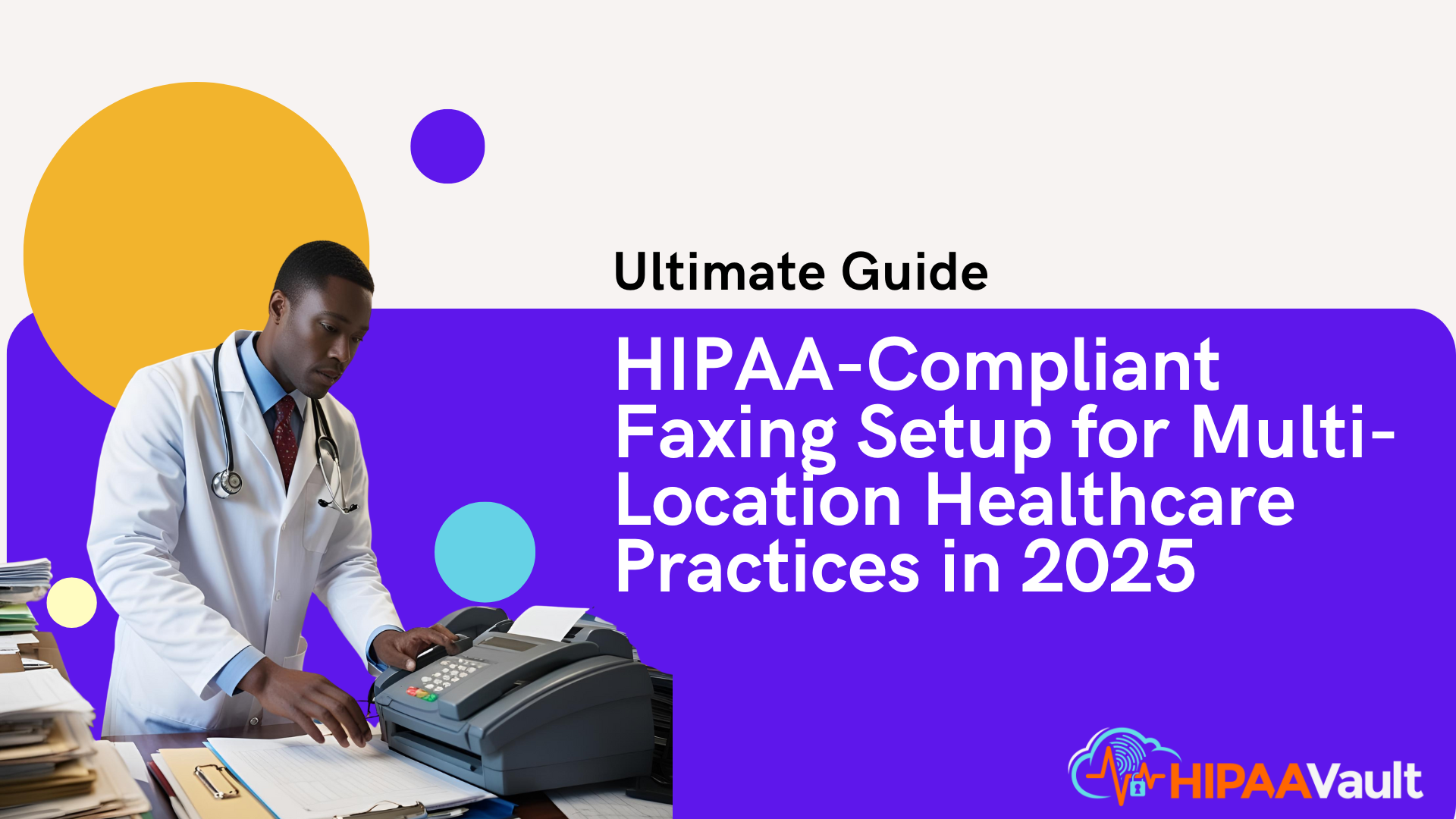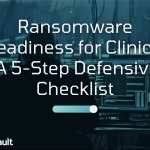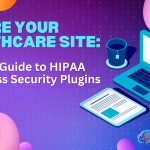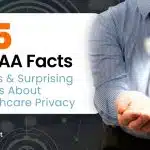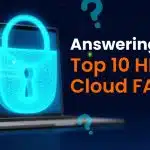Fax remains surprisingly vital in healthcare: 70% of providers still transmit patient information via fax machines due to its perceived reliability and legal acceptance. Yet, clinics operating across multiple sites face amplified compliance complexities—from inconsistent workflows to unsecured physical transmission points. In recent months, the Office for Civil Rights (OCR) has levied penalties on practices whose faxes exposed ePHI, underscoring the critical need for HIPAA-compliant faxing and secure healthcare communication solutions. Modernizing your fax infrastructure not only mitigates regulatory risk but also streamlines document flow, ensuring both security and efficiency across every location.
HIPAA Compliance Requirements for Faxing in 2025
While faxing predates digital health records, HIPAA’s Privacy and Security Rules explicitly govern its use when transmitting protected health information (PHI). Covered entities must implement technical safeguards—such as encryption and access controls—and administrative policies that standardize fax procedures across all sites. One pivotal distinction is between non-compliant analog transmissions and encrypted electronic fax services that sign Business Associate Agreements (BAAs). OCR audits routinely identify gaps: faxes left on unattended machines, cover sheets lacking required disclaimers, and missing audit logs. To satisfy HIPAA in 2025, multi-location practices must adopt a BAA-backed fax provider and enforce organization-wide policies for transmission, receipt, storage, and disposal of faxed PHI (hhs.gov, hhs.gov).
Special Considerations for Multi-Location Practices
When multiple clinics share a fax number or cross-route documents, inconsistencies in cover page formats and retention schedules can lead to compliance breakdowns. Standardized workflows—documenting how each location processes inbound and outbound faxes—are essential to show auditors that policies are uniformly applied.”
The Security Risks of Traditional Faxing Methods
Physical fax machines introduce vulnerabilities at every step. Unauthorized individuals can intercept documents left on output trays. Analog transmissions travel over public telephone networks without encryption, leaving ePHI exposed to interception. Once printed, faxes often get filed in unlocked cabinets or mixed with non-sensitive paperwork, creating audit and storage challenges. Coordinating physical fax flows across locations also demands manual tracking and increases the risk of lost or misdirected pages. The financial consequences of non-compliance are steep: OCR civil monetary penalties average $100,000 per incident, not including remediation costs and reputational harm (compliancy-group.com).
Digital Transformation: Moving to HIPAA-Compliant Electronic Faxing
Transitioning from analog to electronic fax solutions unites security and convenience. Cloud-based eFax services encrypt data in transit and at rest, authenticate users via secure portals, and maintain comprehensive audit logs. In contrast, on-premise servers require substantial IT overhead but offer tighter control over data residency. In either model, end-to-end encryption must use industry-standard protocols (TLS 1.2+), and user authentication should leverage multi-factor controls and role-based permissions.
Electronic fax platforms can automate document routing by department or content type, reducing manual intervention and human error. They also preserve searchable digital archives, facilitating quick retrieval for compliance audits and patient requests.
Implementation Guide for Multi-Location Practices
A phased rollout ensures minimal disruption:
- Assess Current Needs: Survey each site’s fax volume, document types, and existing hardware.
- Standardize Workflows: Create unified cover page templates and processing rules, documented in a central policy manual.
- Port and Manage Numbers: Migrate existing fax numbers to the chosen electronic service, ensuring continuity for referrers and patients.
- Train Staff: Conduct role-specific sessions on secure faxing procedures, emphasizing incident reporting and BAA responsibilities.
- Integrate Systems: Connect eFax APIs with EHR and practice management software to auto-import inbound patient documents.
By the end of pilot at a single location, gather metrics—delivery success rates, processing times, and user satisfaction—before scaling to additional sites.
Advanced Security Features for Enterprise Healthcare Faxing
As practices grow, so do security demands. Look for these enterprise-grade capabilities:
- Granular Encryption Controls: Per-document encryption keys and FIPS-compliant algorithms.
- Role-Based Access: Limit fax functions by job role, with separate privileges for sending, receiving, and auditing.
- Automatic Content Routing: Systems that parse document types (e.g., lab results vs. referrals) and forward them to designated departments.
- Centralized Dashboard: Real-time visibility into fax traffic across all locations, enabling rapid anomaly detection.
- Business Continuity: Geo-redundant infrastructure and disaster recovery testing to ensure fax availability during outages.
Document Management Workflow Optimization
Digital faxing is only half the transformation; organizing and retrieving those records completes the cycle. Implement automated routing rules to classify faxes by patient ID or document category. Adopt a searchable archive backed by secure cloud storage, turning static image files into indexed, text-searchable assets. Configure retention policies that automatically purge or archive documents according to your compliance schedule—typically six years under HIPAA. Many electronic fax systems offer direct integration with document management platforms, reducing manual uploads and ensuring a unified, audit-ready repository.
Conclusion and Next Steps
Securing fax communications across multiple locations demands more than upgrading hardware; it requires a strategic shift to electronic, encrypted, and auditable workflows. Start by mapping your current fax landscape, select a BAA-backed eFax solution, and roll out standardized policies. Measure success through metrics like transmission reliability and processing efficiency, then refine your approach with advanced security features.
For multi-location practices ready to modernize their fax systems, HIPAA Vault Fax provides a turnkey solution: secure electronic faxing, centralized management, and expert support for ongoing compliance.
Protect your patients, streamline operations, and achieve peace of mind with HIPAA-compliant faxing.


